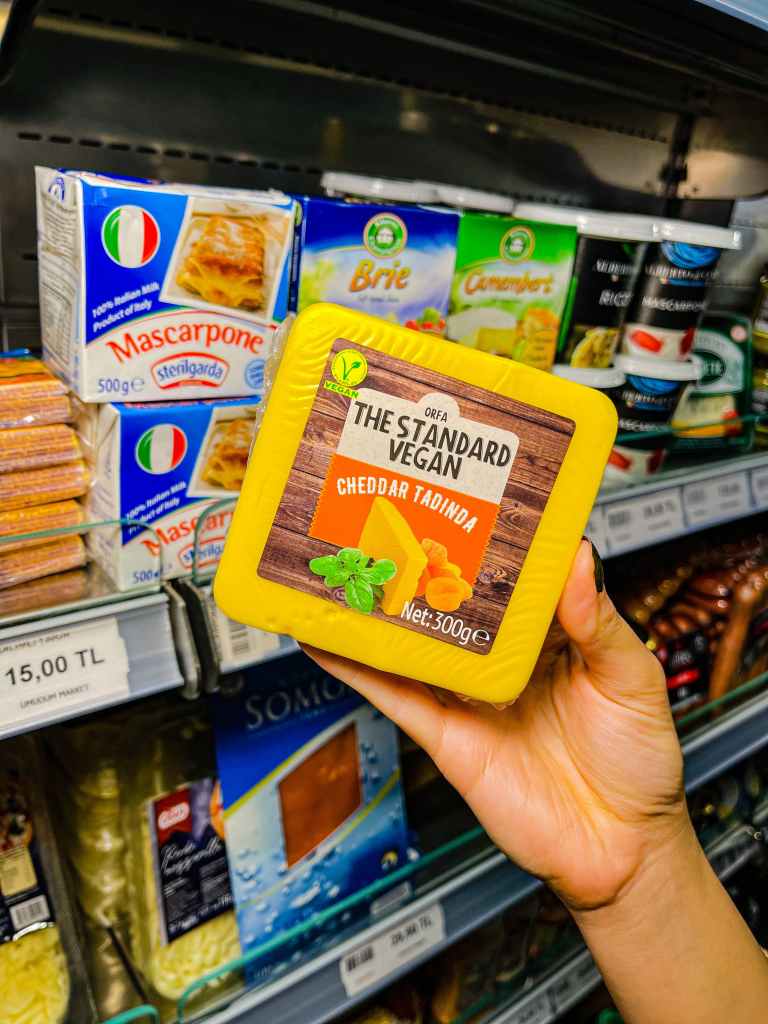
Image credit: Unsplash by alicekat, regular cheese
versus

Image credit: Pexels by Enesfilm, vegan cheese
Vegan and regular cheese have a considerable difference in texture, mouthfeel, smell, and flavor. Refer to my previous blog—texture, aroma, taste, and mouthfeel—for a detailed description of the difference between regular milk and plant-based milk, or mylk. It depends on who you talk to; the term is interchangeable.
Difference between regular and vegan cheese
Regular cheese contain casein, the main ingredient that helps cheese coagulate. Casein is an important product in milk that provides the emulsification in most products. For example, when a hot drink, such as, a latte is steamed with regular milk. The casein helps form the foam on top of the drink. Therefore, milk can be used in different products such as cheese, and dishes like pasta to help form a thick sauce, or a dense final product. The science of making cheese provides the general description of cheese making. As you can see in the diagram, the casein coagulates—process where the solids are separated from the liquid—this gives the final cheese product the dense texture. To add here, in my experience during my time as a cheese maker, the first step of the process is the most important. Testing the pH, acid levels, and sanitation procedures are all critical steps to prevent bacteriophages—virus that destroy bacteria—from growing in the milk during the addition of the bacteria.
In comparison, vegan cheese lacks casein that helps emulsify the final product. Other ingredients are added to thicken the vegan cheese. These include, agar, tapioca, peas, soy, nuts like cashews, coconut oil, and arrowroot. The ingredients help provide the similar consistency as regular cheese. The taste is slightly difference. For example, when I used to work in a vegan factory, the cheese product contained coconut oil as one of its main ingredients, and potato starch. This gave a thick texture with a slight coconut, and hint of spicy flavor. The potato starch was used here as a thickener instead of the casein, and other flavor enhancers are added, such as, olive oil. In vegan processing, an important step to achieve a tasty vegan cheese is time. The more time, the better final product. It needs more time because the vegetable protein and bacteria sit and break down further. Also, there is no coagulation, and protein curdling like regular cheese.
Texture and taste
I would say, vegan cheese has a slightly different texture during melting. It depends on the ingredients used. For example, the coconut oil used can give an oil and creamy texture, and a hint of cayenne pepper taste like the chao product. The taste will depend on the base of the product. Some products will give a nutty flavor because of the almond or cashew mylk. Compared to regular cheese, there is a sour, bitter, salty taste. Other times, the fungi, bacteria provide a different flavor and color. Final note here, I would experiment with different products out there. Some of the products have an acquired taste that is not appetizing for some people.
References
1. Brunning, Andy (2022). Periodic Graphics: The science of making cheese. Chemical &Engineering News; volume 100, issue19. Website: https://cen.acs.org/food/food-science/Periodic-Graphics-science-making-cheese/100/i19
2. Field Roast. Website: https://fieldroast.com/product/chao-slices-smoked-original/

Pingback: Food science topics – Alimentative